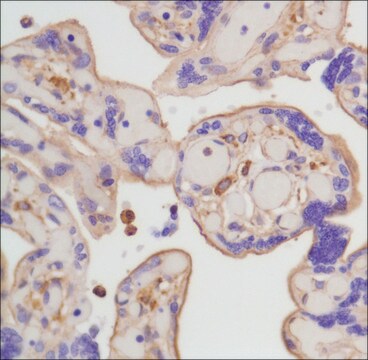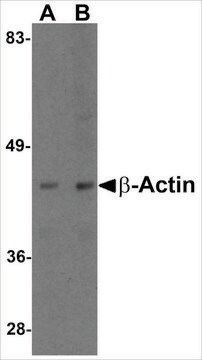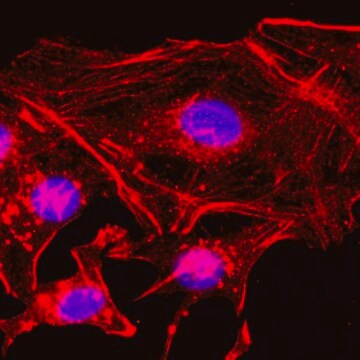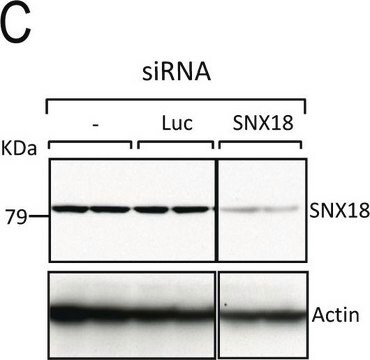ABT264
Anti-beta Actin Antibody, arginylated (N-terminal)
from rabbit, purified by affinity chromatography
Synonym(s):
Actin, cytoplasmic 1, arginylated, beta Actin, arginylated
About This Item
Recommended Products
biological source
rabbit
Quality Level
antibody form
affinity isolated antibody
antibody product type
primary antibodies
clone
polyclonal
purified by
affinity chromatography
species reactivity
mouse, rat, human
species reactivity (predicted by homology)
orangutan (based on 100% sequence homology), canine (based on 100% sequence homology), rabbit (based on 100% sequence homology), hamster (based on 100% sequence homology)
technique(s)
dot blot: suitable
immunocytochemistry: suitable
western blot: suitable
NCBI accession no.
UniProt accession no.
shipped in
wet ice
target post-translational modification
unmodified
Gene Information
human ... ACTB(60)
General description
Specificity
Immunogen
Application
Western Blotting Analysis: 2.0 µg/mL from a representative lot detected N-terminally arginylated beta actin in human (HeLa, HEK293, HepG2, HUVEC, Jurkat, PC3), rat (PC-12 pheochromocytoma), and murine (C2C12 myoblast, NIH/3T3, and Raw 264.7) cell lysates, as well as in human placenta and mouse brain tissue homogenates.
Dot Blot Analysis: 0.2 µg/mL from a representative lot detected immunogen peptide, but not the corresponding peptide without the N-terminus arginine (Courtesy of Dr. Anna Kashina, University of Pennsylvania, Philadelphia, PA).
Western Blotting Analysis: 0.2 µg/mL from a representative lot detected greatly reduced beta actin N-terminal arginylation modification in Arg-transfer RNA (Arg-tRNA) protein transferase (Ate1) knockout mouse embryonic fibroblasts (Courtesy of Dr. Anna Kashina, University of Pennsylvania, Philadelphia, PA).
Note: Goat serum is found to interfere with the staining by this polyclonal antibody, BSA is recommended for sample blocking when using this product.
Cell Structure
Cytoskeleton
Quality
Western Blotting Analysis: 2.0 µg/mL of this antibody detected N-terminally arginylated beta actin in human A431 cell lysate.
Target description
Physical form
Storage and Stability
Other Notes
Disclaimer
Not finding the right product?
Try our Product Selector Tool.
recommended
Storage Class Code
12 - Non Combustible Liquids
WGK
WGK 1
Flash Point(F)
Not applicable
Flash Point(C)
Not applicable
Certificates of Analysis (COA)
Search for Certificates of Analysis (COA) by entering the products Lot/Batch Number. Lot and Batch Numbers can be found on a product’s label following the words ‘Lot’ or ‘Batch’.
Already Own This Product?
Find documentation for the products that you have recently purchased in the Document Library.
Customers Also Viewed
Our team of scientists has experience in all areas of research including Life Science, Material Science, Chemical Synthesis, Chromatography, Analytical and many others.
Contact Technical Service









